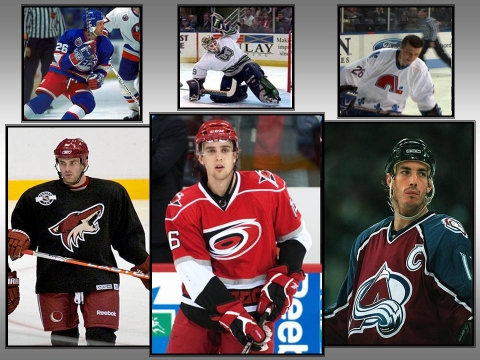By Derek Rosenfeld
As the baseball season ends, the basketball season begins, and the football season kicks into midseason gear, the common American sports fan’s plate is more than full. However, the recent start of the hockey season once again was presented as little more than a footnote on nightly sportscasts, radio call-in shows, and sports periodicals. The fourth and final component of what is commonly referred to as the “Big Four” of American sports is becoming more and more of a cultural enigma in the United States, almost becoming an afterthought in many cities that support teams.
Why? According to recently published National Hockey League (NHL) attendance figures, the sport has never been more popular. During the 2008-2009 season, the league announced that it had set an attendance record for a fourth consecutive season, with a total attendance of 21,475,223; the per-game average of 17,460 was 1.1 percent higher than the corresponding record figures of 21,236,255 and 17,265 from 2007-08.1 Official 2010-2011 attendance figures are equally impressive, with the league average, according to the NHL, being approximately 16,667 per game, or about 90 percent of stadium capacity.2

Photos found on Wikimedia Commons and taken by (top left to right) hockey fights; Captain 59; Tsunami330; (bottom left to right) Michael Wifall; Kellja00; and Hakan Dahlstrom.
So, what is the problem? Is there a problem? Unfortunately, yes, and it only begins with those attendance figures, which come from the teams themselves and are widely disseminated by sports media, fans, and even the players as being lies.A November 4 game between the NHL also-rans Columbus Blue Jackets and Atlanta Thrashers in Atlanta, Georgia, had an announced crowd of just 8,461. However, video replay clearly showed that, most likely, actual attendance was around 2,500 to 3,000. Similar exaggerated attendance figures are popping up all over the league. Currently, more than half of NHL arenas are regularly posting attendance figures of less than 12,000 fans per game, where a 20,000-seat arena is barely half full; some have been recorded as being as much as two-thirds empty. The main reason these numbers are so important is that low attendance does not just hurt gate receipts; it also affects parking, concessions, merchandising, and the entire value of the franchise. Most notably, the Phoenix Coyotes, formerly the Winnipeg Jets, have been posting figures at 43 percent fan capacity—a dismal number—in their arena for this season after having similar attendance problems for the past several years. On May 5, 2009, the team filed for bankruptcy and is now owned by the NHL. On September 24 of that year, the great Wayne Gretzky stepped down as its head coach after nine years.
In Part 2 of this article, I will go in-depth into the financial aspects of the NHL’s current predicament.
Derek Rosenfeld is an associate editor for Fire Engineering. He is beginning his sixth season as the assistant baseball coach at Bergen Community College in Paramus, New Jersey. He is also an infielder for the semipro North Haledon (NJ) Reds. During the mid-90s, Rosenfeld was a three-year starter at second base for the Ramapo College baseball team in Mahwah, New Jersey, where he earned all-New Jersey Athletic Conference honors and was a two-time New Jersey Collegiate Baseball Association (NJCBA) all-star selection. He was named MVP of the 1997 NJCBA All-Star Game. He has a bachelor’s degree in communications from Ramapo College.


